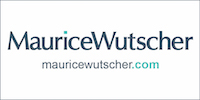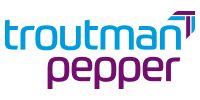Source: site
Total bankruptcy filings increased 16% in October 2024 compared to the year before, according to recent findings from Epiq.
A recent report released by Epiq AACER, a leading provider of U.S. bankruptcy filing data, revealed that total bankruptcy filings were 47,104 in October 2024, a 16% increase from the October 2023 total of 40,674.
“We continue to observe a rise in overall filings, with notable increases in individual filings, reflecting the financial pressures faced by households,” said Michael Hunter, vice president of Epiq AACER. “Factors such as higher consumer loan delinquency rates, increased interest rates, record-high national average mortgage payments, sharp increases in insurance premiums, and overall increased expenses are significantly impacting household budgets, driving the upward trend in bankruptcy filings.”
Other key findings of the report include:
- Individual bankruptcy filings totaled 44,522 in October 2024, a 16% increase from the October 2023, 38,278.
- Individual chapter 7 filings reached 27,358 in October 2024, a 22% increase over the 22,351 filings in October 2023.
- Individual chapter 13 filings totaled 17,091 in October 2024, an 8% increase from the 15,874 filings in October 2023.
- Overall commercial filings increased 8% to 2,582 in October 2024, up from 2,396 in October 2023.
- Commercial chapter 11 filings decreased 13% to 563 in October 2024, compared to 647 filings in October 2023.
- Small business filings, captured as subchapter V elections within chapter 11, reached 202 in October 2024, an 18% increase from 171 in October 2023.
Month-over-month changes from September 2024:
- Total bankruptcy filings increased 11% from 42,547.
- Individual filings increased 11% from 40,098.
- Individual chapter 7 bankruptcies increased 14%.
- Chapter 13 bankruptcies increased 7%.
- Commercial filings increased 5% from 2,449.
- Subchapter V elections increased 22% from the 165.
- Commercial chapter 11 filings decreased 24% from 739.
“Elevated prices for goods and services, along with higher borrowing costs, compound the economic challenges faced by struggling families and businesses,” said ABI Executive Director Amy Quackenboss. “Access to bankruptcy is key to consumers and companies looking to alleviate their intensifying debt loads and have a chance for a financial fresh start.”




